What Is Bunkering In Ships?
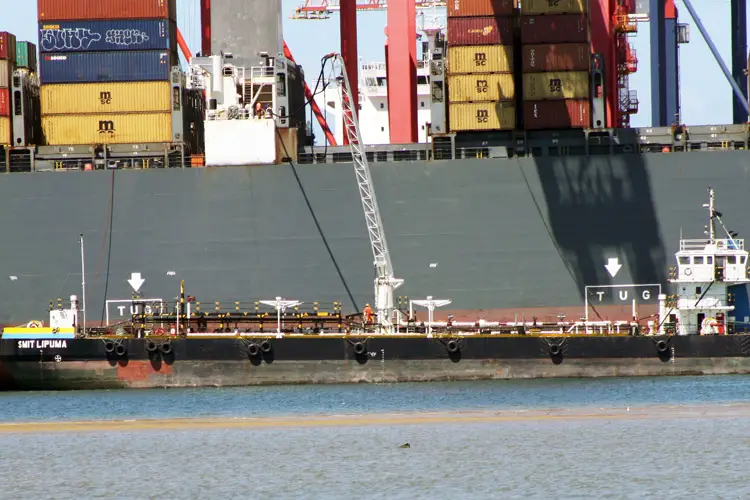
What Is Bunkering In Ships
One of the most critical operations on the ship is fuel oil bunkering. Bunkering is the process of receiving oil in the ship’s tank and making sure that there is no overflow during the process.
What is Bunker Fuel?
Bunker fuel also known as the bunker is any fuel used for powering a ship.
The term has its roots back in the days when the primary source of power for the ships was coal. The coal was stored in a container known as the bunker. As the industry changed from coal to oil for propulsion, the name remained and became synonymous with the fuel for ships. Hence, bunkering oil means fuel oil used for ships.
Bunker fuel is the residual portion that remains from the process of crude oil refinement. Naturally, it is much cheaper than the latter.
It is used by big land-based plants as well as large ships for their propulsion and auxiliary engines. Since it is cheap, it lowers the expenditure for companies dealing with commercial shipping.
Bunker fuel in itself might be cheap. But they are heavy, thick, and consequently storing them becomes a challenge. Special procedures need to be adopted regarding heat management and transportation.
Types of Bunker Fuel
Different types of Bunker fuel are used depending on the vessel types.
- Marine Gas Oil (MGO)
- Marine Diesel Oil (MDO)
- Intermediate Fuel Oil (IFO)
- Marine Fuel Oil (MFO)
- Heavy Fuel Oil (HFO)
- Liquefied natural gas (LNG)
Grades of Bunker Fuel
Generally, residual fuel oil is used which is the lowest grade petroleum product from a refinery. It is also known as Bunker C.
- Bunker A – Gas oil range bunker fuel also called marine diesel or marine gas oil
- Bunker B – Low-viscosity vac resid range bunker fuel.
- Bunker C – The most commonly used bunker.
How Bunker Fuel is Needed by a Ship?
How much oil is to be taken is decided based on the duration of the trip. Usually, the tank is filled with enough oil to last for 3 days. But in case of longer trips over the Pacific and the Atlantic there needs to be enough oil for five days as in these cases it is not usually possible to get oil en route.
The amount of oil that is to be taken is decided after consulting the master. Various other things are also decided upon in an interactive session that involves the ship’s crew.
This conference is less of a formal thing, and more of a discussion regarding the issues involved, the duty that each needs to perform, precaution against overflow, and if by chance there is a case of a spill, how that is to be handled is also discussed in this meeting.
A bunker plan is chalked out with the help of the chief engineer. The plan makes sure that the mixing up of oil is avoided as much as possible to maintain the draft and proper trim of the ship.
The bunker plan made by the chief is discussed, and in some scenarios, a copy of it is also sent to the owner for approval before initiating the bunkering process.
The basic reason behind creating this plan is to make sure someone of higher authority is overseeing the process and seeing to it that there is no overfilling happening and that the temperature is not going above say 50-degree Celsius.
Bunkering operations can be carried out at sea or a port. Both methods have their advantages and disadvantages. It all boils down to the juggling of maintenance costs and running costs.
Bunkering Operations at Sea
Quite a number of commercial ships depend upon this method. The major sea routes have many points where there are bunkering barges providing bunkering facilities. The advantages of this method are as follows.
Advantages of Bunkering
- The course of the ship need not be changed for bunkering.
- The time spent on going to a port for the bunkering process can now be better used.
- The time wasted in waiting in a queue for berthing and bunkering is reduced.
- The process itself is quick and easy.
- Since fewer ships are now going to the port they are benefiting from reduced waiting periods.
- No berthing at ports equates to no port charges.
There are some disadvantages to this method too:
Disadvantages of Bunkering
- It is difficult to maintain the position of both the ship and the bunker barge concerning each other.
- Compared to bunkering at a port, this method is comparatively less safe.
- If there is an emergency, it is easier to get help at a port than in the middle of the sea.
- Since it is difficult to maintain position collisions may occur leading to oil spills and other accidents.
- The arrangements needed to supply oil to the ships varies from one vessel to another.
- This facility is not as widely available as the traditional port bunkering.
Types of Bunkering
1) Ship to Ship Bunkering
This is the process where two ships align themselves side by, and then the oil is transferred from one vessel to the other. Here one ship acts as the terminal while the other moors. It is the most common bunkering process at sea.
In this operation, the ship receiving the fuel is called the daughter vessel and the one providing it is called the mother vessel. It does not matter which of the two is bigger. A crane helps in transferring the hose from the mother vessel to the daughter vessel. Once the connection is securely made the oil is pumped from one vessel to the other.
Initially, the pumping rate is kept low to make sure that the fuel is entering the right tank or tanks, and once it is confirmed the speed is increased to the maximum to finish the job as quickly as possible.
2) Stern Line Bunkering
Stern line bunkering is an easier process. Here the two ships keep a distance of 100-250 meters as the towing lines are secured. Then they start moving at a speed of 2 nautical miles and simultaneously long pipes of length 200 meters transfer fuel from one vessel to the other. This method is quite useful when the weather is calm. But when it is not things might take an ugly turn.
The whole idea behind this process is the stability of the two vehicles. During bad weather, the ships become unsteady and such proximity leads to a collision. This process is too risky to be performed during bad weather.
Bunker Terminologies
1) Bunker
Bunker in the shipping industry means fuel oil for ships.
2) Bunker Barge
Bunker Barge is a vessel provided by the Bunker Supplier for supplying Bunkers to or receiving Bunkers from Ships.
3) Bunker Supervisor
Bunker Supervisor is a qualified person appointed by the Bunker Supplier to supervise the bunkering on his behalf
4) Bunker Supplier
Bunker supplier is the party supplying Bunkers to or receiving Bunkers from a Ship
The Bunkering Process
One of the first things to make sure during the bunkering process is that the bunker barge has been taken along safely. The chief engineer, as well as the crew, is responsible for ensuring that the barge crew has been provided with safe access. There should be harmony and coordination between the people involved in the process.
There are times when you will be required to rig and lower the gangway and at the same time adjust the height continuously as the process of transferring oil carries on.
If you are in good terms with the bosun of the ship, then you are lucky because you will not be required to bother the chief or the duty officer as the bosun will be able to help you through most of the process.
It is all about having an understanding among each other when it comes to a matter of maintaining safety while carrying out such tasks.
Cooperation and mutual respect for each other’s views can go a long way.
After making sure that the barge is alongside and the bunker man has taken his position in the Engine Control Room (ECR), the chief engineer and his assistant check the specifications and discuss the following issues:
- The rate of filling should not exceed 300T/hr.
- Maintaining a sub 3 bar pressure on the bunker line.
- The process that is to be implemented for sampling the oil.
- The different signals and what they stand for should be made clear.
Simultaneously, at the deck, the other bunkering team receives the hose and connects it to the ship’s flange, with active participation from the first or second engineer and the fitter or 5th engineer.
The bunkering process requires, ordering, preparation, and is preceded by a pre-bunkering process.
During the ordering, the total amount of fuel required for the trip is first calculated by the chief engineer who also makes sure that the oil has been manufactured maintaining the ISO Regulation 8217.
According to the Marpol Annex VI (6), no type of additive or chemicals should be present in the bunker fuel. This is because their presence causes major air pollution and moreover it is not safe for the proper functioning of the ship either.
The chief engineer needs to measure, check, and calculate all of this. After all, this has been done the order gets sent to the head office along with all the associated details like quantity, type of fuel and delivery location, delivery date, etc.
The pre-bunkering meet is conducted to plan the details of the process, the safety measures to be adopted, the medium of communication and what part of the job each person is supposed to do.
The set of standard procedures that are to be adopted is decided upon, and a detailed discussion takes place during this time.
Before the process even starts the ship needs to be prepared. The pipes and tanks need to be properly lined up and sounded. Warning signs like no smoking need to be shown, and the ship personnel is also required to be brief. The code B red flag should be hoisted, and in case it is night time red light is turned on.
It needs to be made sure that both the bunker station and its trays are clean and the deck scupper is plugged. All necessary overboard valves should also be kept closed. Place oil-absorbing material at select spots. Also, make sure that the alarms are working just fine. See to it that all the pipes for the tank ventilation and sounding are in proper condition.
Risks Associated with Bunker Fuel
1) Oil Spill
The biggest problem associated with the bunkering process is an oil spill. Accidental oil spill causes huge losses to the company. The company responsible needs to pay a hefty fine and he is also losing oil which in itself is worth a lot. But all this is nothing when compared to the damage caused to the environment because that is permanent and no matter how sophisticated a cleanup process is initiated by the company or the government a hundred percent removal is practically impossible and in some cases more harmful.
2) Health Issues
Marine fuel needs to be heated up to a certain temperature before it can be pumped or used otherwise. It increases the risk of skin burn when coming in contact with any of the associated machinery or pipelines. It can also cause various kinds of skin problems. The oil not only contains carcinogenic substances but also produces hydrogen sulfides which when inhaled can cause serious health problems.
3) Sulfur Content
Based on the refinement process oil in different parts of the world have different levels of sulfur content, and thus the oil grade varies. There is a chance that there might be a dispute with the supplier regarding the actual sulfur content, sampling procedure, and flow rate, all of which can be avoided by following good bunkering practices.
4) Damage to the Engine
Inferior quality marine fuel can damage the parts of an engine. It is because it causes poor combustion and overheating which damages the pistons and piston rings. If you mix fuels that are not compatible with each other, it can lead to severe issues like filter problems, damaged injectors, and emulsification of the fuel mixture.
Few Things to Keep in Mind during the Bunkering Process
- It is a good idea to take the task of putting a bolt in each hole seriously. Otherwise, there will be a lot of tension on the hose if the barge by chance gets separated which in turn could lead to much more severe problems.
- Align valves to ensure flow to the correct tank. Checking the lines and valves for a second time before starting the bunker is also a good idea. Also, remember to open the valve at the bunker flange. These are the times when the presence of the chief engineer overseeing this process can come in handy cause forgetting such minute things can lead to serious damages. Keep a tab on the sounding as this gives an idea of the filling rate which is worth noting down. Start with two tanks (Port and Starboard). Adjust the valve to control the oil flow so that the soundings remain the same for both tanks. The difference should preferably not exceed 20cm.
- Keep in mind the rule of ‘OPEN first, CLOSE after’. Maintain an 85% ullage and as one tank is about to reach that limit open the other tank valve first and then close the valve of the tank that is almost filled instead of doing the other way around of first closing the nearly full tank first and then opening the valve for the next tank.
- Never hesitate to stop the bunkering process if you are unsure of the ullage especially when it is almost full. It might so happen that due to some reason you have lost track of how much of the tank has been filled. In this case, stop the bunkering process. Check the progress and then resume. Many people hesitate to stop the bunkering process. Don’t be one of them. There is no need to fill up the entire tank in one go. Find out the ones that are already filled. Then if you want to top them up some more follow the inching method.
- The draught and trim of the ship are checked. The Sounding of all the tanks bunkered is taken. The volume of fuel should be corrected for trim, heel, and temperature correction. Four samples are taken during bunkering. One is kept on board, one for the barge, one for analysis, one for port state or IMO.
- The chief engineer will sign the bunker receipt and the amount of bunker received. He can issue a note in case of any shortfall in the bunker received. After everything is settled, the hose connection is removed. The sample is sent for laboratory analysis. The new bunker should not be used until the report from the lab.
Also read: What is Baltic Mooring?
What is the Inching method?
As the other tanks are filling up open the tank valve for like 5 minutes and then close it. Check the rise in cm and based on this open it again, this time for 10 minutes. This is how you can get to 90% of the tank level. However, I would strongly advise you to not go beyond that.
Tank valves are prone to leakage. So, it is advisable that even after changing from tanks 1 P&S to 2 P&S keep an eye on the former, at least for some time to make sure there is no problem. Once you have made sure that the oil is entering the second tank properly come back and check if everything is alright with the first tank.
The sampling pot needs to be checked at regular intervals to adjust the filling to get the representative sample.
Maintain safety while keeping the Marpol sample and make a note of the seal number and the Sulphur content.
One copy of the bunker delivery note is to be sent to the master and keep a legible copy with yourself. Another copy needs to be sent to the lab along with the sample.
There is always a chance of an oil spill. But whether or not that unfortunate incident happens, it is always a good idea to check SOPEP room and carry out an oil spill drill, before bunkering.
The supplier should be provided with the agreed quantity, agreed pumping rate, and the vessel for each grade in black and white. An established means of communication needs to be agreed upon too for the stoppage to eliminate spillage. One must take care to plug/seal all the scuppers as appropriate.
Conclusion
As mentioned earlier communication is the key. So, discuss your plans with all your team members and maintain transparency and cordiality with them.
Image courtesy: https://www.flickr.com/photos/satransport/33283912101

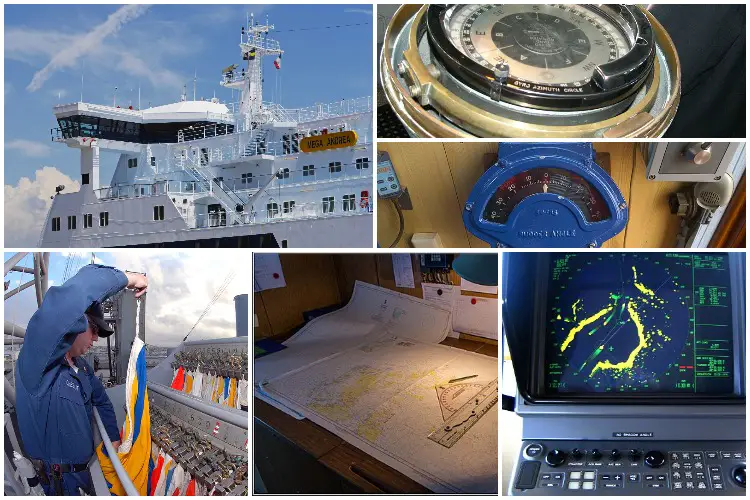
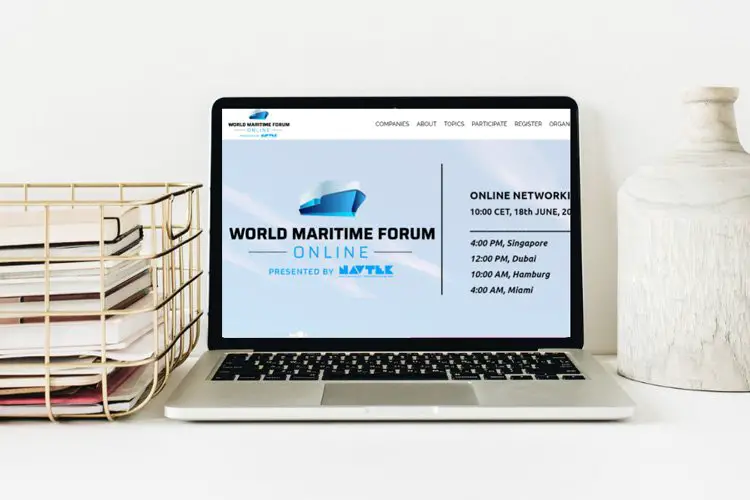
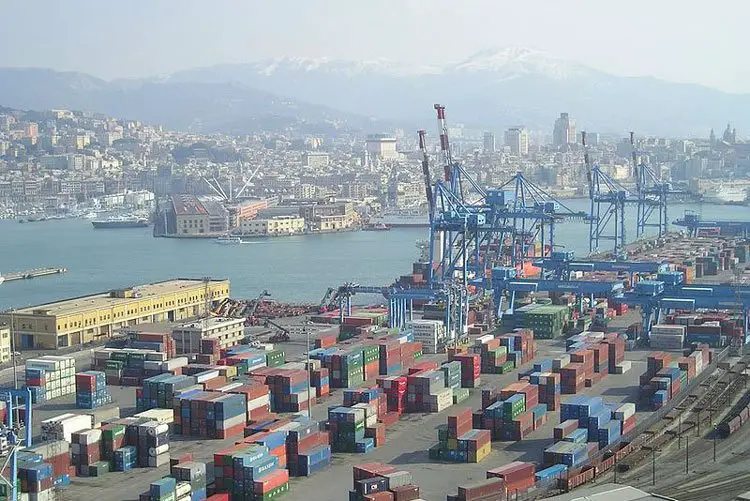
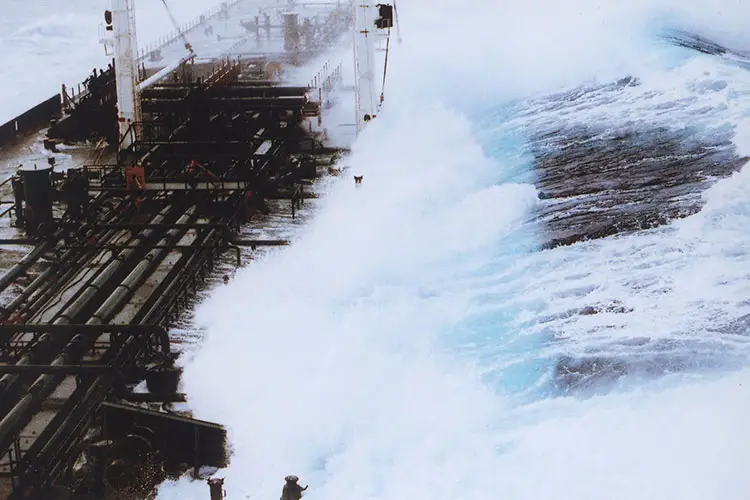
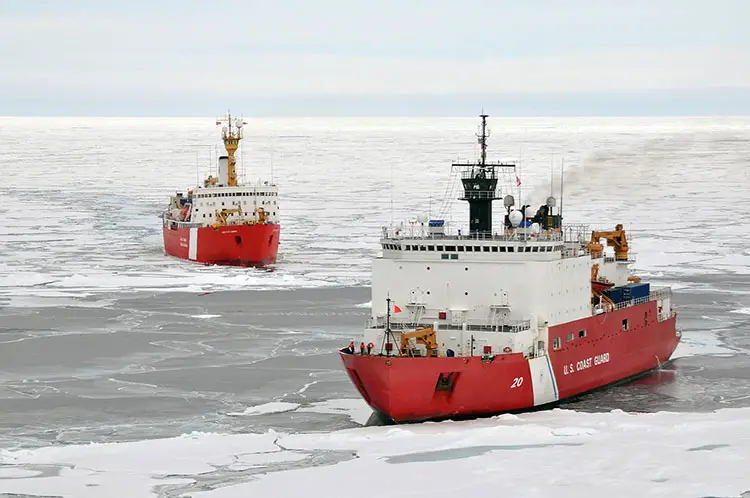

Thanks for such an in-depth article on Bunkering!
Thanks for visiting us! 🙂